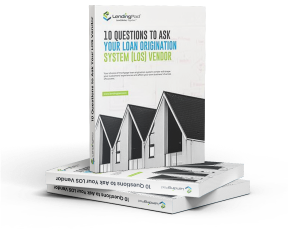 The loan origination process is complex and highly segmented. The manual procedure requires multiple hand-offs among different departments across the front and back offices -- involving many moving parts that are prone to errors and delays.
The loan origination process is complex and highly segmented. The manual procedure requires multiple hand-offs among different departments across the front and back offices -- involving many moving parts that are prone to errors and delays.
The traditional process is outdated and no longer keeping up with the times.
In today's competitive business environment, it's important to optimize your operations, minimize costs, and improve the speed of the application process so you can maximize results by overcoming challenges posed by the traditional loan origination process.
Key Challenges in Traditional Loan Origination Process
A traditional loan origination process, which is often handled manually, is cumbersome for both lenders and borrowers:
- Processing a tremendous amount of paperwork is time-consuming and error-prone.
- Different types of loan products, which have different credit underwriting requirements and workflows, can cause confusion and inefficiencies.
- Verifying customer information is a tedious task yet a small error can lead to major issues.
- Documentation can get lost in the shuffle as they pass from one party to another, holding up the application process.
- Data entry by multiple parties throughout the process causes data integrity issues
- Unbalanced workload and unresponsive third parties can lead to delays.
- Delay in the manual screening process if the right documents aren't passed to the right party in a timely manner.
- Passing paperwork with sensitive financial information from one department to another poses security concerns and lead to compliance issues.
- Lack of visibility into the pipeline and workflows can impact management's ability to optimize resources.
- Lack of standardization leads to increased chances of human errors and malpractice.
From loan application and document submission to loan fulfillment functions, a manual loan origination process can cause delays, errors, and frustrating customer experience.
Such a cumbersome and lengthy process can no longer meet customer expectations in today's fast-paced digital world. Consumers are accustomed to "instant gratification" - they expect fast and streamlined services from any company they do business with and it's no difference when they're applying for a loan.
Digitization and automation is the key to increasing the accuracy and efficiency of your lending operation. With the right loan origination solution, you can service clients from anywhere, keep track of all the documents, safeguard customers' sensitive information, and automate workflows to speed up the application process.
Improve Lending Operation With a Cloud-Based Load Origination Solution
Cloud computing has numerous advantages and many of them are particularly well-suited for overcoming the key challenges in a loan origination process, which are often caused by a large amount of documentation, the need to coordinate workflow with parties in different locations, and the lack of visibility into the process.
Cloud Architecture: an Overview
In a cloud computing system, there are the front-end and back-end components connected to each other through a network, which is usually the Internet.
The front-end component includes the users' computer and an application required to access the cloud computing platform (e.g., an Internet browser.)
The back-end system consists of a collection of computers, servers, and data storage systems, which is often referred to as the "cloud." A central server is used to administer the system, monitoring traffic and client demands to ensure that everything is operating properly.
Besides running software applications, the back-end system often has a large digital storage capacity to keep all the customers' files and data in a centralized location for easy access.
Reputable cloud providers also have multiple built-in redundancies -- such as copies of the files stored in servers at different physical locations and comprehensive backup and recovery plans -- to ensure the safety of their customers' data.
The Benefits Of Using a Cloud-Based Loan Origination Software
74% of Tech Chief Financial Officers say cloud computing had the most measurable impact on their businesses and by 2020, 83% of enterprise workloads will be in the cloud.
Compared to on-premise solutions (i.e., purchasing software licenses and installing applications onto the hard drive of individual devices,) a cloud-based platform provides a cost-effective solution that enables a business to be more responsive to market demand, security compliance, and customer expectations.
Here are some key advantages of using a cloud-based solution to support your loan origination process:
Flexibility and Accessibility
Employees can access the cloud platform from anywhere with an Internet connection. For example, a mortgage broker can originate a loan while she's out meeting with a client instead of waiting to get back to the office before she can start the process.
Real-time updates from vendors allow brokers/lenders to respond to prospects in a timely manner. 24/7 connectivity to various service providers makes it easy to originate loans at any time.
Cloud computing also helps organizations leverage the "Bring Your Own Device" trend to tap into the power of a mobile workforce while reducing overhead and administrative costs.
Scalability and Capacity Planning
A cloud computing service allows you to purchase features and functionalities on-demand as your business evolves. You can add users as your team grows so you don't have to pay upfront for capacities that you don't need.
Some cloud solutions include unlimited users or branches so you don't have to worry about adjusting your budget as you add employees or expand your operation geographically.
Not only can you become more agile with staffing and capacity planning but also have the ability to expand within a short period of time or add capabilities to your platform to meet lending volume demands without needing additional IT resources or large upfront investments.
Document Storage and Sharing
The many documents and the tremendous amount of paperwork involved in a loan origination process is often the cause of errors and delays. If a document has been updated, the various versions could cause even more confusion.
A cloud computing platform provides virtually limitless storage space for all the documentation needed in a loan application process. Since the files are stored in a centralized location, everyone will have access to the latest version to avoid miscommunication, unnecessary delays, and costly errors.
Role-Based Access and Features
A cloud-based platform allows you to purchase the appropriate features that match the role of each employee. For example, you can include QC, closing, warehousing, post-closing, and auditing capabilities for users that require banking functions for their jobs.
While all the customer data is stored in a centralized location and updated in real-time, you can use a role-based assess feature to ensure that each employee can only view or edit the information they need to do their jobs to reduce confusion and improve security.
Collaboration and Communication
Employees can access the cloud from any device, such as desktop, tables, and smartphones, to enhance collaboration and ensure seamless communication no matter where they are.
Many cloud platforms offer configurable multi-user collaborating features. Documents can be edited and updates without refreshing so there will be no slow-downs or file lockouts.
In addition, files can be uploaded to the cloud and shared with everyone simultaneously in real-time to minimize miscommunication, versioning issues, and delays due to paperwork that gets lost in the shuffle.
Low Upfront Investment and Ongoing Overhead
Other than the devices that your employees need to get online, you don't need to purchase additional hardware or servers to start using a cloud computing platform. Time and cost required for initial setup are minimal and you don't need a large IT team to implement the solution.
Most cloud service providers charge a monthly or annual subscription fee that's user-based, success-based, or usage-based to cover ongoing services and maintenance. This allows you to better forecast your budget while lowering ongoing IT overhead and expenses.
Also, well-designed cloud applications have an intuitive user interface that allows administrators with moderate IT experience to configure the software. As a result, you don't have to spend on pricey specialists to get the application up and running.
Workflow Automation and Integration
Real-time access to information via a centralized platform enables effective workflow automation and management that eliminate bottlenecks and increase efficiency.
Many cloud platforms provide the capability to integrate with other systems or software applications via open API. In particular, bi-directional API enables real-time data exchange to facilitate the process and eliminate human errors caused by re-keying information.
In addition, some cloud LOS solutions offer integrated Point-of-Sale (POS) features that support an end-to-end direct to consumer channel to ensure that data travels seamlessly between the customer interface and back office operations.
Automated Update and Performance Optimization
Your business is virtually future-proof when you use a cloud-based loan origination system since your subscription fee covers all subsequent software maintenance and updates to ensure that you have access to the latest technologies.
You'll be able to offer the latest features to your customers and meet fast-changing market expectations at no additional cost. You can be sure that you're always up-to-date without having to spend a large sum on IT resources.
When you work with a reputable vendor that uses a best-in-class cloud hosting company (e.g., AWS cloud), you can rest assured that you're getting the most scalable and fast performing solution that can keep up with a large workload without any glitch.
Cyber-security and Data Protection
66% of IT professionals say security is their greatest concern while it's becoming increasingly costly for organizations of any size to keep up with the latest cybersecurity protocols.
The cost of data breaches is also skyrocketing. A lost or stolen record can cost as much as $336 in the financial industry, which doesn't take into account the loss of recurring or future customers and the damage in reputation.
A reputable cloud provider has a team of security experts whose job is to stay current with the latest cyber-security measures and protect your data. Detailed security audits are conducted frequently and patches are implemented immediately to minimize security risks.
In addition, most cloud platforms offer a variety of built-in security features, such as multi-factor authentication, and IP lists to ensure that only authorized users can view, edit, or share sensitive data.
Backup and Recovery
IT downtime costs an average of $5,600 per minute, which doesn't even take into account other intangible costs resulting from interruptions, impacts on customer experience, and damage in reputation.
Using a cloud-based solution can help you mitigate the risks caused by downtime thanks to built-in redundancies designed to maximize up-time.
Most cloud providers also have a comprehensive backup and recovery plan in place to ensure that your data is backed up and secure even under unforeseeable circumstances. For example, the use of distributed data centers minimizes the risk of outages caused by location-specific events such as a natural disaster.
Conclusion: Optimizing the Loan Origination Process With a Cloud LOS Software
Using a cloud-based loan origination software (LOS) can help you increase cost-efficiency, streamline the customer experience, reduce overhead, minimize costly errors, shorten the application process, and improve security.
There are many cloud software providers and it's important to choose one that offers the right features to meet the needs of your business.
Your LOS provider should offer a high level of configuration/customization to ensure that the software can fit into the workflows and processes of your organization and meet your business objectives.
Inquire about the product development road-map to understand the continuous improvements and innovations the vendor plans to implement. Also, make sure that the platform uses a trusted cloud hosting solution (e.g., Amazon's AWS) to ensure fast performance and optimal security.
In addition, select a vendor that offers subscription plans with various levels and pricing models (e.g., user-based, success-based and usage-based) that provides the flexibility to help optimize your budget.
Ready to Move to the Cloud?
Lending Pad offers a complete suite of cloud-based loan origination solutions designed for brokers, lenders and institutions. Learn more about our award-winning LOS, paperless loan files, document management, eligibility engine and more by requesting a demo to see the software in action.




